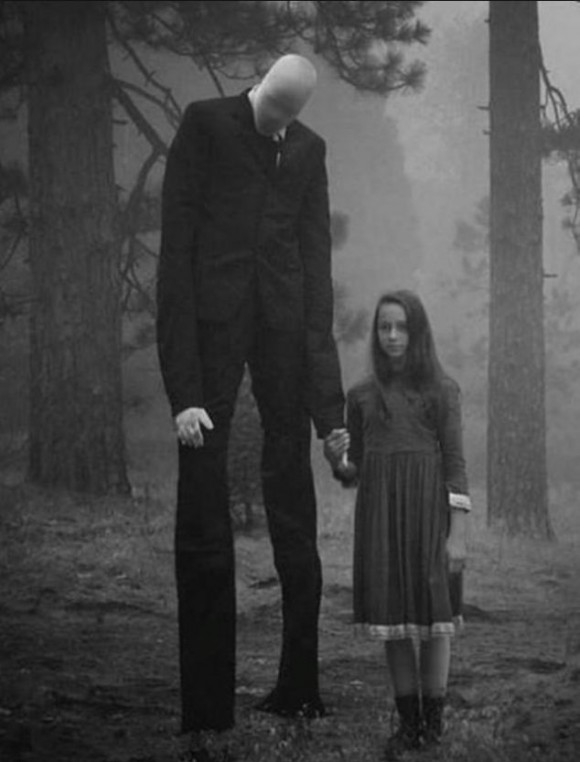 When we think of inter-group relations, we might think our job, friends, or what we see on television. When I think inter-group relations, I automatically go back to high school. What better place to pull examples of prejudice, discrimination, social identity theory, and social dominance theory. It is all here under one roof, now keep in mind when I was in high school it was the height of the 1980’s and fashion played an important role in the a fore mentioned theories that we will discuss.
When we think of inter-group relations, we might think our job, friends, or what we see on television. When I think inter-group relations, I automatically go back to high school. What better place to pull examples of prejudice, discrimination, social identity theory, and social dominance theory. It is all here under one roof, now keep in mind when I was in high school it was the height of the 1980’s and fashion played an important role in the a fore mentioned theories that we will discuss.
Let us start with inter-group relations that tell us that we size a person up when we meet them. Evolutionary psychologists say that our ancestors used this theory to see if they would welcome a stranger into the tribe. They based this on eye and skin color and similarities to themselves. This served a purpose as to keep diseases that would wipe the tribe out (Applying Social Psychology to Diversity, 2012). This practice was still being used in my high school with the same foundation as our ancestors. When a new student would show up to school, they were instantly sized up, first by what they wore, such as Espree, Polo, Swatch, etc. Secondly, their social skills were observed. Finally, their demographics were looked at such as how much money their parents had and what kind of car they drove. Once this assessment was done, the new person was placed in a group and the other groups treated like you did not even exist. You really had no choice at our school in these matters. Therefore, we can see that appearances were very important much as they were to our ancestors. This leads us to prejudice and discrimination.
The definition of prejudice given to us by Webster’s dictionary is an injury or damage resulting from judgment or action of another in disregard of ones rights. In our high school, there were only two students of non-white descent. They were treated fairly  but were not included in any of the groups in the social hierarchy, nor were they ever invited to any social gatherings. The definition of discrimination given to us by Webster’s dictionary is the practice of unfairly treating a person or group of people differently from other people or groups of people. For my high school, this meant the groups in which you did not belong discriminated against you and the lines of social hierarchy were rarely crossed.
but were not included in any of the groups in the social hierarchy, nor were they ever invited to any social gatherings. The definition of discrimination given to us by Webster’s dictionary is the practice of unfairly treating a person or group of people differently from other people or groups of people. For my high school, this meant the groups in which you did not belong discriminated against you and the lines of social hierarchy were rarely crossed.
Allport (1954) argued “that people put together and working to a mutual goal would form a bond or reduce tensions between groups” (Applying Social Psychology to Diversity, 2012). I am afraid that he would have been poorly disappointed in our school. We were placed in classes together and had to work together toward an academic goal but no bond was formed. In extracurricular activities, a show was put on for others that we were getting along but boundaries remained untouched. Therefore, for Gordon’s hypothesis it failed like a cement balloon at our school.
What does Social Identity Theory mean? It means that we act one way when we are in a certain group or environment than when we are alone. An example of this is, when in school we all put up a front to be the person that our groups want us to be. One of my close friends, when she was alone, liked to not wear makeup and lounge around in sweat pants and read, but in our school setting, she played the pretty, silly, typical blonde cheerleader. For myself when I was in high school I was in the closet and maintained the illusion of being straight by dating many girls in high school so that my social group would not ostracize me. Within Social Identity Theory, there is the idea of personal identity and social identity.
Personal identity is simply defined as “the factors such as age, race, and sex that places us into groups” (Brewer & Gardner, 1996). It also involves “characteristics of people so the bio-social markers also create a personal identity including also all of the aspects of the self that are unique to the individual and which are used to define the  individual” (Brewer & Gardner, 1996). The best way to match this with an example from our school would be the athletic department. If you were a guy with skills, football would be the top choice, basketball would be the second choice and therefore classified as a “jock” and looked up to by the school to put us on the high school map. If you were
individual” (Brewer & Gardner, 1996). The best way to match this with an example from our school would be the athletic department. If you were a guy with skills, football would be the top choice, basketball would be the second choice and therefore classified as a “jock” and looked up to by the school to put us on the high school map. If you were  a girl who was peppy and flexible, you would try out for the cheerleaders, and if you were very pretty and flexible, you tried out for the school dance team, which was considered a higher social status than cheerleader was. Both groups were considered athletic but designed for the different sexes and talents of the students.
a girl who was peppy and flexible, you would try out for the cheerleaders, and if you were very pretty and flexible, you tried out for the school dance team, which was considered a higher social status than cheerleader was. Both groups were considered athletic but designed for the different sexes and talents of the students.
Social identity as translated by my classmates and myself is what group you belong to, defined who you were. If you were popular and beautiful, you ruled the school. If you were athletic you gave pride to the school, however if you stood on the sidelines and did not wear what was in style you were considered an outcast. Now the groups have grown to encompass many other types therefore creating a more diverse selection of groupings. For us we had the less complex groupings, such as jocks, nerds, and popular kids.
The last theory to be discussed is the Social Dominance Theory. What this means is that there is an indication that “society is arranged by a system of group based hierarchies and that people within those groups are typically motivated to behave in ways that maintain these hierarchies” (Pratto, Sidnaius, & Levin, 2006; Sidnaius &  Pratto, 1999). In our school this defined the hierarchy as the “popular” and their duty was to maintain the popular borders of the school and all lower social structures within the school. A good quote that comes to mind for this comes from “The Fellowship of the Rings” when Gandalf says, “You Shall Not Pass!”
Pratto, 1999). In our school this defined the hierarchy as the “popular” and their duty was to maintain the popular borders of the school and all lower social structures within the school. A good quote that comes to mind for this comes from “The Fellowship of the Rings” when Gandalf says, “You Shall Not Pass!”
Some of you might think our school was mean and unjust, but it was the 1980’s at a private school in Utah and things were done differently and we dealt with it. Things are better but the social structure of inter-group relations is still at work on high school campuses all over. These types of structures will always be in existence at high schools, however it is our job to help teach the younger generations to be proud of whom they are and not allow themselves to put into a mold and conform to the social norms.
References
Allport, G.W. (1954). The nature of prejudice. Reading, MA: Addison-Wesley.
Applying Social Psychology to Diversity. (2012). In F. Schneider, J. Gruman, & L. Coutts (Eds.),Applied social psychology: Understanding and addressing social and practical problems(2nd ed.). Los Angeles: Sage.
Brewer, M., & Gardner, W. (1996). Who is this “we”? Levels of collective identity and self-representations. Journal of Personality and Social Psychology, 71, 83-93.
Pratto, F., Sidanius, J., & Levin, S. (2006). Social dominance theory and the dynamics of intergroup relations: Taking stock and looking forward. European Review of Social Psychology, 17, 271-320.
Sidanius, J., & Pratto, F. (1999). Social dominance: An intergroup theory of social hierarchy and oppression. New York: Cambridge University Press.














 s no surprise that the use of Facebook has given way for negative psychological states to arise from its frequent use. It has been found that those who use Facebook are more likely to suffer from anxiety, narcissism, and low self-esteem. Although there are also people who have incredibly high self-esteem that are found on Facebook as well (Williams, 2014). In the research that was conducted it was found that about 12% of Facebook users reported the site made them feel anxious; about 30% reported feeling guilty for rejecting a friend request; others reported feeling a sort of pressure to come up with witty statuses as well (Williams, 2014).
s no surprise that the use of Facebook has given way for negative psychological states to arise from its frequent use. It has been found that those who use Facebook are more likely to suffer from anxiety, narcissism, and low self-esteem. Although there are also people who have incredibly high self-esteem that are found on Facebook as well (Williams, 2014). In the research that was conducted it was found that about 12% of Facebook users reported the site made them feel anxious; about 30% reported feeling guilty for rejecting a friend request; others reported feeling a sort of pressure to come up with witty statuses as well (Williams, 2014).



 At least twenty of my online friends had posted this. Out of curiosity, I clicked “play” on the video. My initial thought was “Holy cow, thirty minutes long?!” My attention was quickly gained as a man named Jason Russell described his life’s work of saving invisible children in Uganda and set fourth a manhunt for a reportedly horrid man named Joseph Kony. Like the millions of other young adults featured in the video, I immediately felt a shift inside of me, along with the inspiration to become an advocate for these unfortunate people suffering in Uganda and help to capture Joseph Kony.
At least twenty of my online friends had posted this. Out of curiosity, I clicked “play” on the video. My initial thought was “Holy cow, thirty minutes long?!” My attention was quickly gained as a man named Jason Russell described his life’s work of saving invisible children in Uganda and set fourth a manhunt for a reportedly horrid man named Joseph Kony. Like the millions of other young adults featured in the video, I immediately felt a shift inside of me, along with the inspiration to become an advocate for these unfortunate people suffering in Uganda and help to capture Joseph Kony.








 After about thirty minutes of this stressful ordeal and no luck, they drove me to the nearest station to file a report. There a detective gave me a photo album with plastic photo sleeves that held hundreds of mugshots of young African American men. At the time of the incident, I was not exactly in the frame of mind to notice physical characteristics of my assailants and I especially did not notice facial or other unique features as I had only seen them from behind. I never really saw their faces. I could only say they were youthful – probably young adults, their skin tone dark and that one was wearing red shorts. More over, after an hour had passed my memory for detail was fading. The detective, however, really wanted me to pick someone. I was asked, “Are you sure it wasn’t him?” and “What about this guy. He’s been known to do this sort of thing.” He suggested to me that all these suspects were guilty of something and that I shouldn’t worry too much about who I chose. It was all very unsettling. After about an hour of feeling extremely pressured and frustrated, I told the detective I just did not know if any of the pictures were my attackers. The detective gave up and had an officer drive me home.
After about thirty minutes of this stressful ordeal and no luck, they drove me to the nearest station to file a report. There a detective gave me a photo album with plastic photo sleeves that held hundreds of mugshots of young African American men. At the time of the incident, I was not exactly in the frame of mind to notice physical characteristics of my assailants and I especially did not notice facial or other unique features as I had only seen them from behind. I never really saw their faces. I could only say they were youthful – probably young adults, their skin tone dark and that one was wearing red shorts. More over, after an hour had passed my memory for detail was fading. The detective, however, really wanted me to pick someone. I was asked, “Are you sure it wasn’t him?” and “What about this guy. He’s been known to do this sort of thing.” He suggested to me that all these suspects were guilty of something and that I shouldn’t worry too much about who I chose. It was all very unsettling. After about an hour of feeling extremely pressured and frustrated, I told the detective I just did not know if any of the pictures were my attackers. The detective gave up and had an officer drive me home.

 e event. Even though I am just an undergrad student in psychology at Penn State, the facilitator of the event knew of my eastern medicine background in psychology that I have been practicing for 15 years now. It seems that there is a crisis especially in the realms of clinical and counseling psychology where things are just not going right when trying to psychotherapeutic work “by the book.” Students and therapists spoke of frustrations with diagnosis’ and assessments when using the DSM, they had issues and concerns with objectivity and subjectivity in dealing with their patients, and they were just plain lost, untrained and unprepared to deal with issues of spirituality that arose in their sessions. Their textbooks and teachers had very little to say about this most elusive of unquantifiable variables. This situation, I have heard from speaking with many practicing professionals, is wide spread. And the ever increasing disappointing and damaging results of pharmaceutical-based psychiatry are more and more troubling. This practice parallels the drug cartel like proliferation of pharmaceutical medicines fostered on the American public by drug companies and physicians to treat both major and mundane conditions regardless of the side effects.
e event. Even though I am just an undergrad student in psychology at Penn State, the facilitator of the event knew of my eastern medicine background in psychology that I have been practicing for 15 years now. It seems that there is a crisis especially in the realms of clinical and counseling psychology where things are just not going right when trying to psychotherapeutic work “by the book.” Students and therapists spoke of frustrations with diagnosis’ and assessments when using the DSM, they had issues and concerns with objectivity and subjectivity in dealing with their patients, and they were just plain lost, untrained and unprepared to deal with issues of spirituality that arose in their sessions. Their textbooks and teachers had very little to say about this most elusive of unquantifiable variables. This situation, I have heard from speaking with many practicing professionals, is wide spread. And the ever increasing disappointing and damaging results of pharmaceutical-based psychiatry are more and more troubling. This practice parallels the drug cartel like proliferation of pharmaceutical medicines fostered on the American public by drug companies and physicians to treat both major and mundane conditions regardless of the side effects.









 Japanese and we were married in a Thai Buddhist temple. As a musician I have worked with many Japanese musician, singers and dancers. As a practitioner of Taoist Meditation I have had deeper interactions with Chinese people and culture and my two primary doctors in Chicago and New York are both Chinese acupuncturists. You can imagine that through all of this, and other accounts too numerous to mention, there have been plenty of times I’ve come to face misunderstandings, hurt feelings, and straight out confusion in dealing with people from these collectivist cultures. Collectivist cultures are those where the individual puts the needs and desires of the group they belong to ahead of their own needs. Those in collectivist culture who sacrifice their personal goals, passions, and desires for the good of the group are seen as people having ideal character. As an American dealing with people on American soil I tend to expect people to have roughly the same communication style, values, sensitivities etc that I do. In dealing with Japanese people, the culture I know best, their strong collectivist stances really informs their thinking processes and behaviors. Ideas of not shaming family members, employers or “higher ups” is very strong and I have found superseded even one to one personal loyalties and intimacies at times. This as you can imagine can lead to actions and behaviors that people in individualistic based societies would consider betrayals and quite maddening. Individualistic cultures are those where the individual puts his needs and interests first before whatever group he’s attached to, if indeed he’s even attached to a group. Individualism of character is the hallmark of a successful person here.
Japanese and we were married in a Thai Buddhist temple. As a musician I have worked with many Japanese musician, singers and dancers. As a practitioner of Taoist Meditation I have had deeper interactions with Chinese people and culture and my two primary doctors in Chicago and New York are both Chinese acupuncturists. You can imagine that through all of this, and other accounts too numerous to mention, there have been plenty of times I’ve come to face misunderstandings, hurt feelings, and straight out confusion in dealing with people from these collectivist cultures. Collectivist cultures are those where the individual puts the needs and desires of the group they belong to ahead of their own needs. Those in collectivist culture who sacrifice their personal goals, passions, and desires for the good of the group are seen as people having ideal character. As an American dealing with people on American soil I tend to expect people to have roughly the same communication style, values, sensitivities etc that I do. In dealing with Japanese people, the culture I know best, their strong collectivist stances really informs their thinking processes and behaviors. Ideas of not shaming family members, employers or “higher ups” is very strong and I have found superseded even one to one personal loyalties and intimacies at times. This as you can imagine can lead to actions and behaviors that people in individualistic based societies would consider betrayals and quite maddening. Individualistic cultures are those where the individual puts his needs and interests first before whatever group he’s attached to, if indeed he’s even attached to a group. Individualism of character is the hallmark of a successful person here.

